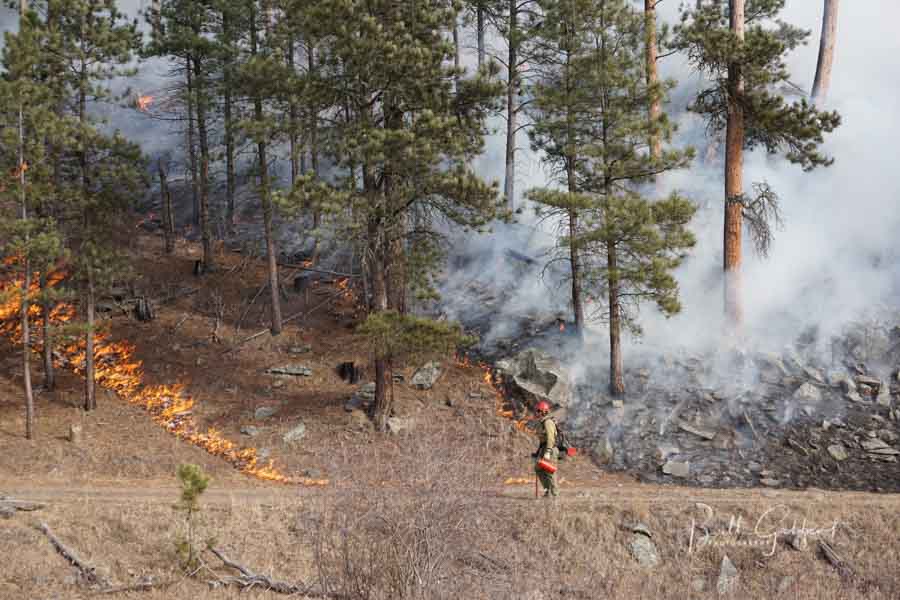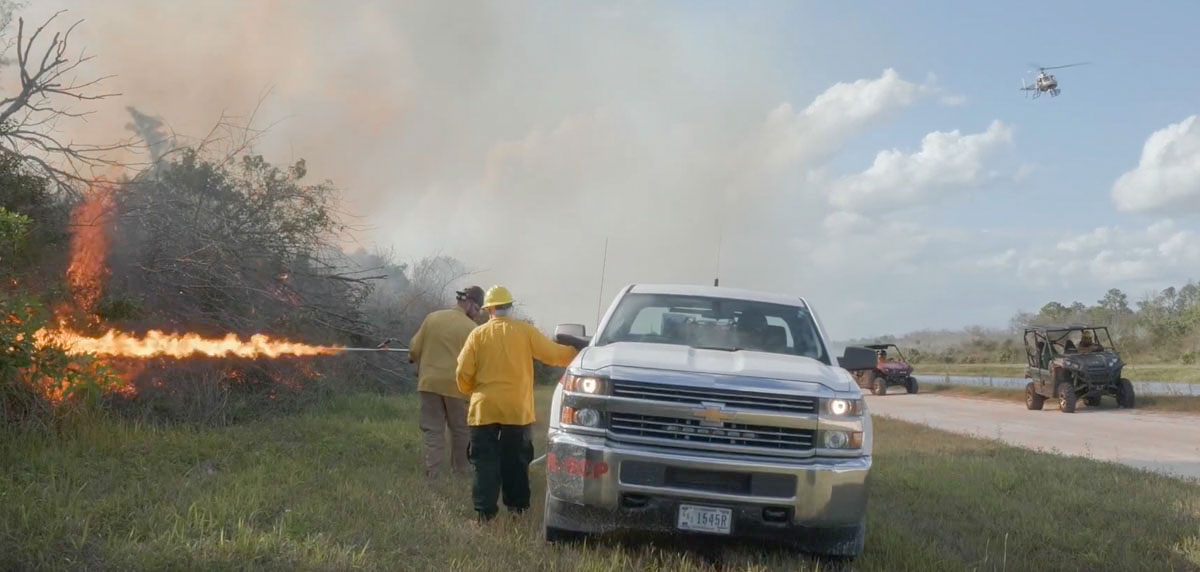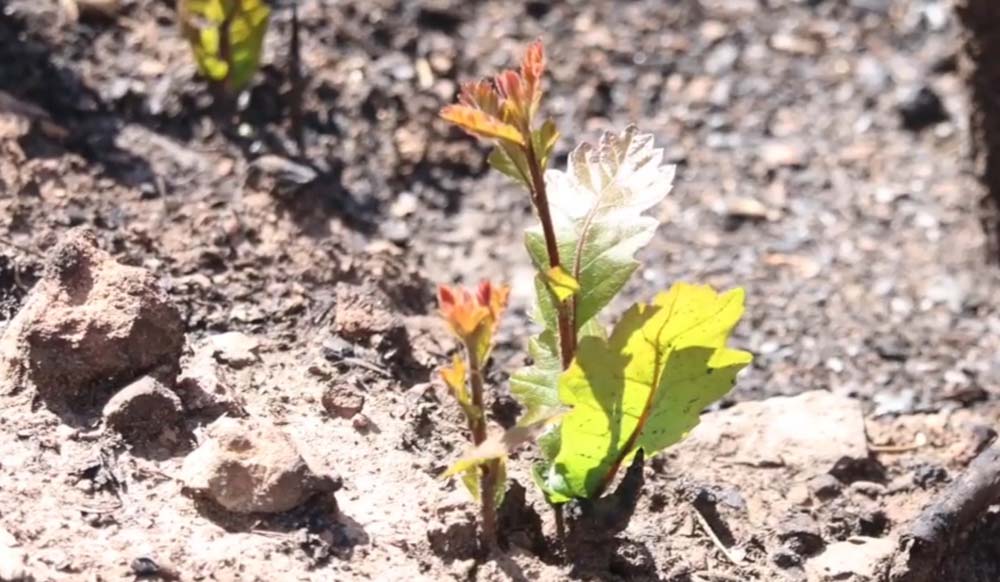
In testimony April 15 before the House Appropriations Subcommittee on Interior, Environment, and Related Agencies, U.S. Forest Service Chief Vicki Christiansen spoke to members of Congress remotely from a spacious office. She had two clear opportunities to accept or ask for more funding in two very important inadequately budgeted areas, fuels treatment and aerial firefighting. In one case when told by a member of Congress “You’re going to need some more help in the resource department,” she incredibly said, “No.”
Doubling or tripling the treatment of fuels
Later, at 48:00, Rep. Mark Amodei of Nevada had been talking about slow, medium, and fast lanes for fuel treatments: “If we want to start getting to the point with the National Forest Lands where we can say our stewardship is in the medium lane as far as fuels management then you’re going to need some more help in the resource department.”
Chief Vicki Christiansen, speaking to the Appropriations committee: “No. What I can speak to Congressman is the science. It is the policy of Congress and the Administration on how fast we go.”
(The Representative then seemed to become a little exasperated, perhaps wanting the Chief to say, “Yes, we could make more progress treating fuels if you could increase our funding.”)
Rep. Mark Amodei: “As a budget reality if this committee wants to help you with fuels, I’m just going to say it — you can disagree with me — we need to do better.”
Chief Vicki Christiansen: “We need to do better. We need to do better. We have more to do to make a difference, a significant difference, on the landscape.”
The need to do more was repeated in another discussion about treating fuels at 57:00. In a discussion with Representative Susie Lee (Nevada) the Chief said their data shows that when a wildfire spreads into an area that has been treated to reduce fuels, 86 percent of the time the fire behavior reduces significantly into a low-intensity fire. Their goal now, she said, is to “treat 40 percent of a fireshed in order to have a resilient forest.”
Rep. Susie Lee: “How realistic is it to be able to treat 40 percent of a fireshed?”
Chief Vicki Christiansen: “Well, that’s why we have to up our game two to three times what we are doing now. ”
Rep. Susie Lee: “OK.”
The Chief did not explain how she is going to increase fuels treatment by “two to three times” on stagnant funding.

Funding for aerial firefighting
At 34:05 in the video below Rep. Mike Simpson from Idaho was discussing aerial firefighting, and point blank asked — how much money do you need? She replied at the end of a long, off the subject meandering discourse, “We think we are really on the right track with our air tankers,” without mentioning budget needs.
“One thing I’ve been dealing with,” Rep. Simpson said, “are the aviation assets of the Forest Service… Are we going to have a clear outline for the next 10-year plan for what the Forest Service needs in terms of air assets? How the five and ten year contracts you’re looking at will affect us and benefit us and what we need to put into our budget to so that the Forest Service has the necessary equipment to address these wildfires?”
Chief Vicki Christiansen: “All great questions. But I have to say, you know it was, let me see, 16 years ago I was the new state forester in the state of Washington and my first time before this committee, you were ranking member………. [three and a half minutes later:] Relative to your question about air tankers, the contracting air tanker community has really come on line they are meeting our needs of contemporary air tanker capacity for wildland fire in the U.S. We are studying the question about going to a 10-year contract, what the pros and cons are. We’re nearly complete with that report. It will be going through clearance in a matter of a few days and it will be getting to the committee here shortly. So we’d be glad to discuss more about air tankers. But we think we are really on the right track with our air tankers. And thank you for being such a help and an advocate for getting us get the right resources.”
Rep. Mike Simpson: “Thank you.”
10-year contracts and fuel treatments
In December, 2020 Congress directed the Forest Service and the DOI to submit a report within 90 days that considered awarding 10 year contracts for aircraft available for wildland fire suppression activities.
Fire Aviation wrote about these critical issues in December, 2018 and October, 2020. Here is a brief excerpt from the latter:
These one-year firefighting aircraft contracts need to be converted to 10-year contracts, and the number of Type 1 helicopters must be restored to at least the 34 we had for years.
In addition to aircraft, the federal agencies need to have much more funding for activities that can prevent fires from starting and also keep them from turning into megafires that threaten lives, communities, and private land. More prescribed burning and other fuel treatments are absolutely necessary.
The longer we put this off the worse the situation will become as the effects of climate change become even more profound.
Technology in the Forest Service
In Chief Christiansen’s five-page prepared testimony, several tech-related initiatives were mentioned:
We are also investing in several key technology and modernization portfolios; including, Data Management, Enhanced Real Time Operating Picture, Decision Support Applications, and Modern Tools for a Modern Response. Additionally, implementation of the Large Fire Assessment process, as directed by the Consolidated Appropriations Act, 2021 (Fiscal Year 2021 Omnibus), is helping us better account for our actions while fostering a learning culture.
Chief Christiansen said (at 18:15 in the hearing) the agency is investing $8 million in a pilot program to utilize a system for tracking the location of firefighters. They are also standing up a program for Unmanned Aerial Systems by purchasing their first 20 aircraft.
The agency has signed an agreement with the Department of Defense and committed funds to access a system that uses satellites to detect fires “which already supported over 500 fires just this year alone in 2021.” She did not say if she was referring to the fiscal year which began October 1 or the calendar year.





